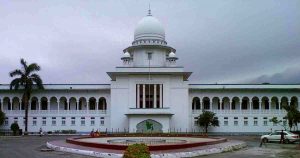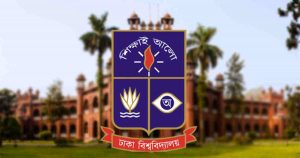Chosen schools are more about celebrating Korean identity than supporting the Kim regime
Emil Truskowski
If you’ve followed the news during the past few months, you’ve probably heard about the Japanese association of North Koreans called Chongryon and its problems with Japanese law enforcement. What you’ve probably missed from that story is the fact that, in Japan, there is a big community of Koreans with Northern citizenship who are not engaged in politics, and who simply want to live out their lives.
These Koreans living in Japan do, however, struggle to keep their national identity alive and one of the most important tools to achieve this are schools for ethnic Koreans. Sometimes these schools are opened to the public and I couldn’t miss the opportunity to see it with my own eyes.

The 15th Annyeonghaseyo (“Hello” in Korean) Festival took place June 21 at the Tokyo Middle and High School in Kita-ku district of Tokyo. The festival was free and open to the public. At the entrance gate visitors were greeted by schoolgirls wearing chogori, a traditional Korean dress, which is often worn as a school uniform. The bottom of the dress was dark blue and the top is snow white with, surprisingly, no visible Kim Il Sung pin. Had I come to the right place? The huge sign at the entrance did state that this is Chosen school, so I guess I hadn’t gotten lost.
First, I had to sign the guestbook. Upon completing this complicated registration, I received a small leaflet with a festival program written both in Japanese and Korean. The design obviously was prepared by the students and filled with cute pictures representing attractions for visitors.
As I was really hungry (my friends told me not to eat anything before coming to the festival), my first step was to the main square in front of the gymnasium and class building. This is where students have prepared a row of stands selling various Korean delicacies. As I approached, I noticed that everyone was competing for clients by seeing who could shout the loudest. Well, no one had to convince me to try Korean BBQ, so I lined up as one of the first customers. I ordered using my more-than-rusty Korean and even though my obvious message was understood by the Korean student, I was quickly briefed that I needed to buy special coupons, as you cannot pay with cash directly. Finally! A little bit of communist-style shopping!
I went where I was told and found a box where I gladly put 1,000 yen to get my coupons, but then, to my surprise, I realized I’d just donated money to the school. Oops, wrong box! Anyway, the Korean school needs it, as it doesn’t receive any financial backing from the Japanese government anymore, like other Japanese schools. Because of this, the tuition of Korean schools is more expensive than for other private schools in Japan. One month costs around 50,000 yen, which is a big burden for Korean families with kids. In the past Korean schools were generously backed by the North Korean government, but the money flow has been rather irregular in recent years (although the pro-North Choson Sinbo paper has reported that Marshal Kim Jong Un sent a substantial amount of money to Chongryon for educational purposes in April 2015). Finally, after buying the coupons, I was able to get some barbequed meat, a pack of kimchi and some crispy chicken. After washing it down with a can of Japanese beer sold in the grown-ups corner for cash, I could start exploring the school grounds.
NO PROPAGANDA?
I have heard that a portrait of Kim Il Sung used to hang from the main classroom building. Presently, you won’t see any huge portraits on the walls of school buildings. As I was walking around and taking pictures, some Korean students started to say “hello” to me or even initiate a conversation. Well, as a European I did stand out from the crowd of other Japanese visitors. A bunch of schoolgirls quickly approached me. They were all wearing a chogori and proudly announced “We are Korean.” Their English was pretty good and they happily posed in front of my camera. I also was told that the students often commute to school from a distance of over an hour or longer just to go to a Korean school.
I checked the festival program and decided to head for the other classroom building, where there were many activities to attend. On the way, I passed a big field used for football and rugby, or rather “soccer” and “American football” as they are called in Japan. A tournament between other schools was being held. Upon entering the school, visitors were asked to take off their shoes and put on slippers. Visitors could enter a couple of classroom where various events were held.
On the corridor some students were crowded around a computer, and when I came closer I realized, why they were so excited. They had their school’s built-in Minecraft and were playing around on the map. They were too occupied with mining for resources too even notice me glancing over their shoulders. In one of the classrooms there was an exhibition depicting the history of Koreans in Japan. Second grade students were lined up in front of big posters that explained the problems that Koreans face in Japan, including the issue of cancellation of financial aid to Korean schools by the Japanese government. They were very well-prepared with their thick notebooks and ready to answer any question.
One would think that a North Korean school would be full of propaganda. Well, you would be disappointed. The students don’t wear Kim Il Sung pins. I didn’t see propaganda posters as well. The usual framed portraits of Kim Il Sung and Kim Jong Il weren’t to be seen in any of the opened classrooms. However, I think they might have been taken down for the festival. You could still see the shadow from the frames. It might have something to do with the fact that the Korean community wants to improve their image in Japan, so maybe they thought showing off with the pictures of not-so-popular-in-Japan Kim Jong Il isn’t a very good idea. For some Japanese, showing portraits of North Korean leaders is considered to show anti-Japanese sentiments, as the abduction issues has still not been fully resolved by both sides. I only saw one portrait – in the teachers’ room. I also spotted two small pictures of Kim Il Sung and Kim Jong Il with children. You could probably easily miss them and wouldn’t even realize you’re in a North Korean school.
THE CURRICULUM
Some of you might be wondering what these kids learn at this school. Korean schools have a separate curriculum from their Japanese counterparts. Because of this, students who wish to go to a Japanese university have to attend additional preparatory classes for entrance exams. Its independence from the Japanese Ministry of Education is also one of the reasons, according to the Japanese side, why these schools have lost their financial help. All classes are taught in Korean and the use of other languages at school, except in language classes, is forbidden. Obviously students hear a lot of Korean language. English class has the same amount of hours as Japanese. Students also learn Korean history and geography. My Korean friend told me that students also have obligatory political class about the achievements of their Korean leaders and obligatory knowledge tests. Some Japanese are against Korean schools, because they accuse them of anti-Japanese education. However, these claims seem not entirely true as some of the accusations are made up or simply some right-wing Japanese spread these slogans because they don’t agree with statements in Korean history books saying things like, “Japan’s involvement in World War II was a war of aggression.” For some Japanese, who don’t agree with these historic facts, this is kind of anti-Japanese propaganda and thus, they believe, that Korean schools are teaching the kids to hate Japan.
My last stop was the gymnasium, where another set of student performances was under way. The show started with a fashion show of traditional Korean clothes. Students dressed up in beautiful chogori have been greeted with enormous enthusiasm from their colleges. Shouts, laughs and whistles from the audience felt the same as in any school around the world, when your friends show up on the stage and give you a chance to make fun of them. Performances by the students were next. A series of amazing dances and music performances followed, where kids showed off their various talents. I especially enjoyed one dance called “Let’s plant trees in our homeland’s soil,” where a group of young girls danced with shovels pretending to plant the trees on the stage. It appears that Kim Jong Il once initiated a campaign to plant trees. Also, the school choir singing, “Our school is like home to our hearts” made a really good impression. Something else I learned that day is that the exaggerated big smiles on children’s faces that you can see sometimes in North Korea are not forced, but are simply part of the scenic image in North Korean performances.
All in all, it was an amazing day at the Chosen School in Tokyo. Events like this are held annually in Korean schools in Japan as a way to create a mutual understanding and friendship between the North Korean community and Japanese. For many Japanese the North Korean community stays completely unknown or considered suspicious. Tensions between both countries have taken their toll on lives of North Koreans in Japan. Not to mention, that in the West barely anyone knows, that there is a big North Korean community in Japan. When it’s actually mentioned somewhere, it’s usually in a negative context. Because of this, in my opinion, Chongryon members rarely speak to foreign journalists and are suspicious of their intentions. It’s a shame, as the North Korean community in Japan offers a very unique perspective of North Korea and can teach us Westerners more about this mysterious country.
Festivals in Korean schools in Japan are held often in spring and summer, so it’s worth looking online at their websites for announcements. I really recommend going if you have a chance.
All pictures: Emil Truskowski – NK News




